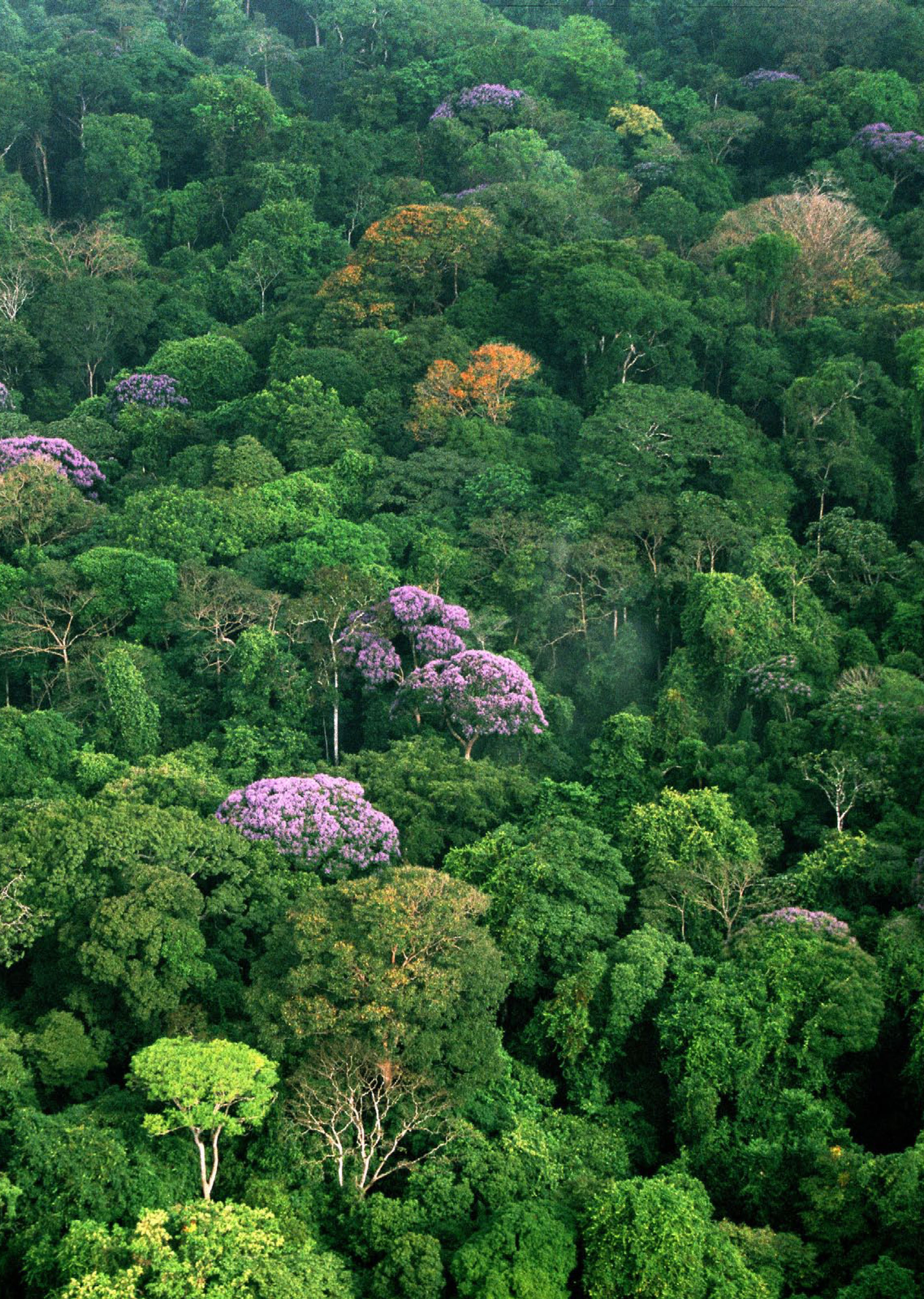The tropical forest canopy is a vital component of Earth’s ecosystem, often referred to as the lungs of the planet due to its significant role in carbon storage. This upper layer, formed by towering trees, not only helps regulate climate but also provides a habitat for countless species. Recent studies utilizing NASA technology, especially the Global Ecosystem Dynamics Investigation (GEDI) LiDAR, have highlighted the importance of monitoring this canopy’s health to understand the effects of climate change. Findings indicate that taller canopies correlate with higher carbon storage and overall forest vitality. As climate challenges escalate, the health of the tropical forest canopy becomes increasingly crucial for maintaining biodiversity and enhancing our planet’s resilience against environmental stressors.
The upper layers of tropical forests, often called the tree canopy, play an essential role in global biodiversity and environmental balance. These elevated structures act as a protective shield for the myriad species that reside below, while also facilitating significant carbon sequestration. Notably, technological advancements, such as NASA’s GEDI LiDAR, have transformed how scientists assess and understand the dynamics within these forested regions. As climate-related phenomena intensify, the integrity of these forest canopies remains a focal point for researchers striving to gauge ecological health and forest sustainability. Understanding variations in canopy height and structure is critical for developing effective strategies to combat climate change and preserve vital ecosystems.
The Importance of the Tropical Forest Canopy in Climate Regulation
Tropical forest canopies play a crucial role in regulating the Earth’s climate by maintaining ecological balance and supporting biodiversity. The upper layers of trees are fundamental to carbon storage, acting as significant reservoirs of carbon dioxide from the atmosphere. This process not only helps to mitigate climate change effects but also sustains local climates by influencing rainfall patterns and temperatures. As studies leveraging NASA technology highlight, the health of these canopies is intimately linked to broader environmental changes, thus underscoring their importance in global climate dialogues.
By employing advanced instruments such as NASA’s GEDI LiDAR technology, researchers can track variations in forest canopy height, which is an important indicator of overall forest health. Taller canopies often signify higher levels of biomass and carbon storage, vital for effective climate regulation. The degradation of these canopies, driven by factors such as prolonged dry seasons and increased temperatures, poses a significant threat to our planet’s ability to combat climate change.
Using NASA Technology to Monitor Forest Health
The Global Ecosystem Dynamics Investigation (GEDI), a cutting-edge LiDAR technology developed by NASA, represents a breakthrough in our understanding of tropical forest dynamics. By providing detailed measurements of canopy height and structure from the International Space Station, GEDI allows scientists to analyze how climate change impacts these vital ecosystems globally. Recent studies suggest that this technology can effectively reveal the links between environmental stressors, like heat and drought, and changes in forest canopy height, aiding in the assessment of forest ecosystem vitality.
Such insights are invaluable as forests are often referred to as ‘Earth’s lungs,’ given their capacity to absorb carbon and produce oxygen. By monitoring the vertical structure of forest canopies, scientists can identify regions at risk and prioritize areas for conservation efforts. This NASA technology plays a fundamental role in understanding how different environmental variables influence forest health and productivity, which is critical for effective carbon sequestration and climate change mitigation.
The Impact of Climate Change on Tropical Forests
Climate change poses a significant threat to tropical forests, particularly in regions like the southern Amazon, where extended dry seasons result in noticeable variances in canopy height. Research indicates that these changes can lead to diminished forest health, affecting their ability to store carbon effectively. The prolonged impacts of climate change, including rising temperatures and changing precipitation patterns, can exacerbate stress on these ecosystems, leading to declines in biodiversity and increased vulnerability to pests and diseases.
With precise measurements from NASA’s GEDI instrument, researchers have documented how altitude, soil quality, and seasonal variations can drastically influence canopy height and overall forest health. Such data reveals that climate-driven changes do not uniformly affect all regions, which highlights the necessity for targeted conservation strategies. Understanding the specific environmental influences on these forests is essential for developing effective responses to combat climate change.
Carbon Storage and Biodiversity in Tropical Forests
Tropical forests are vital not only for their role in carbon storage but also for their extraordinary biodiversity. These ecosystems are home to a vast array of species, many of which play synergistic roles in maintaining ecological equilibrium. The higher the forest canopy, the greater the carbon storage capacity. Thus, preserving tall canopies ensures not just the continuation of carbon sequestration but also the protection of biodiversity, critical for ecosystem resilience.
Research indicates that areas with vibrant and healthy canopy structures often exhibit higher levels of species richness, as the diversity of plant life supports the intricate relationships within the ecosystem. By utilizing advanced techniques such as NASA’s GEDI LiDAR, scientists can gain a deeper understanding of these relationships and develop actionable strategies for conservation. Protecting tropical forests goes hand-in-hand with fighting climate change, as their health directly impacts global carbon storage capabilities.
Understanding Variation in Tropical Forest Canopy Height
The variation in canopy height among different tropical forests reveals essential insights into their respective health and productivity. Factors such as climate, topography, and soil properties account for significant discrepancies in canopy development. Understanding these variations is critical for both assessing forest health and implementing effective conservation strategies. The insights provided by NASA’s GEDI technology have paved the way for a more nuanced understanding of which environmental factors most significantly influence these ecosystems.
In regions identified as particularly vulnerable to climate change, such as parts of the Amazon and African forests, researchers have noted that elements like solar radiation and elevation significantly dictate canopy variation. Recognizing these influences allows scientists to better predict how tropical forests will respond to ongoing climate pressures, facilitating precautionary measures and adaptive management solutions aimed at preserving these environmental treasures.
Future Enforcement of Climate Change Policies for Forest Protection
The ongoing research into tropical forests, especially with the support of technologies like GEDI, holds the potential to reshape climate change policies aimed at their protection. As scientists gain more comprehensive data regarding the health and status of tropical forest canopies, it becomes possible to prioritize conservation efforts geared towards the most vulnerable regions. These policies must recognize the dual role of tropical forests as both biodiversity hotspots and critical carbon stores essential for mitigating climate impacts.
Moreover, the insights gained from measurement technologies can contribute to international discussions on climate agreements, emphasizing the need to incorporate forest health monitoring into global climate strategies. By leveraging research findings, policymakers can tailor conservation initiatives that not only protect these vital ecosystems but also enhance their capacity for carbon storage and biodiversity conservation. This holistic approach towards policy-making ensures a sustainable future for both the planet and its forests.
Average Lifespan and Health Indicators of Tropical Forests
Understanding the average lifespan of tree species within tropical forests gives valuable insights into the health dynamics of these ecosystems. Many tree species have lifespans exceeding hundreds of years, and their age can directly influence forest stability and carbon storage capacity. Health indicators that contribute to the longevity of these trees, such as canopy height and leaf density—as measured by advanced technologies like NASA’s GEDI—are essential metrics for assessing overall forest health.
Additionally, research indicates that disturbances from climate change can lead to significant declines in forest health, affecting species resilience and longevity. By tracking such health indicators, scientists are better equipped to evaluate the impacts of climate variations and implementation of sustainable management practices ensuring the survival of these ecosystems becomes increasingly vital for environmental health and climate mitigation.
Technological Advances in Forest Management and Conservation
The advent of sophisticated technologies, such as NASA’s GEDI LiDAR, has revolutionized forest management and conservation strategies. These tools provide unprecedented access to data regarding forest structure, health, and changes over time, enabling conservationists to implement informed strategies tailored for specific regions. Through accurate measurements, it becomes possible to detect subtle changes in canopy height and forest composition, which can be critical for timely intervention in vulnerable areas.
Moreover, the integration of this technology into global environmental monitoring systems lends itself to a proactive approach in conservation efforts. By equipping policymakers with real-time data about forest health and the impacts of climate change, there is a clear path forward in addressing both conservation needs and climate crisis directives. Sustainable practices built upon this technological foundation will be essential for preserving the resilience of our tropical forests against ongoing environmental changes.
The Role of Tropical Forests in Regulating Local Climate
Tropical forests play an indispensable role in regulating local and global climates, contributing to weather patterns and atmospheric conditions. The dense tree canopies not only sequester carbon but also release moisture into the air, influencing rainfall and temperature patterns in their surroundings. As researchers observe, maintaining the health of these canopies is essential for ensuring that tropical forests continue to benefit local climates, particularly as climate change drastically reshapes environmental dynamics.
These forests also serve as buffers against extreme weather events. By retaining moisture and regulating temperature through transpiration, they help mitigate the effects of heat waves and prolonged drought conditions. This further solidifies the importance of preserving tropical canopy layers, as they are key to maintaining weather stability and enhancing resilience against climate-related threats for millions of people who depend directly on these ecosystems.
Frequently Asked Questions
How does climate change affect tropical forest canopy height?
Climate change significantly impacts tropical forest canopy height by influencing vital factors such as temperature and drought conditions. As seen in recent studies, particularly in the southern Amazon, prolonged dry seasons have resulted in substantial decreases in canopy height, which directly affects the forest’s carbon storage capabilities and overall health.
What role does NASA technology play in studying tropical forest canopies?
NASA technology, specifically the Global Ecosystem Dynamics Investigation (GEDI) LiDAR system aboard the International Space Station, plays a crucial role in studying tropical forest canopies. It provides high-resolution measurements that help scientists analyze changes in canopy height and assess the health of tropical regions affected by climate change.
Why is the tropical forest canopy considered vital for carbon storage?
The tropical forest canopy is essential for carbon storage because taller canopies are linked to higher above-ground biomass, enabling these forests to capture and store significant amounts of carbon dioxide. Maintaining healthy canopies is crucial for mitigating climate change and preserving forest health.
What factors influence the height of tropical forest canopies?
Tropical forest canopy height is primarily influenced by environmental factors such as climate, topography, elevation, and sunlight exposure. Studies utilizing GEDI LiDAR data indicate that these factors account for nearly three-quarters of the variation in canopy height, with dry seasons being a key determinant, particularly in regions like the southern Amazon.
How can understanding tropical forest canopy height help in conservation efforts?
Understanding tropical forest canopy height is vital for assessing the conservation value and carbon sequestration potential of different forest regions. By identifying the environmental factors that affect canopy height, researchers can guide policies aimed at protecting vulnerable tropical forests, which are crucial for biodiversity and climate mitigation.
| Key Point | Details |
|---|---|
| Impact of Climate Change | Climate change has a profound effect on tropical forests, influencing canopy height through factors such as heat, drought, and variations in precipitation. |
| NASA’s GEDI Technology | NASA’s Global Ecosystem Dynamics Investigation (GEDI) uses LiDAR technology to measure and analyze changes in tropical forest canopy height from the International Space Station. |
| Canopy Height Importance | The height of the forest canopy is a crucial indicator of forest health, ecosystem productivity, and carbon storage capabilities. |
| Regions of Study | The study focused on tropical forests in Asia, Africa, and South America, particularly areas with minimal human disturbance. |
| Environmental Drivers | Factors influencing canopy height include climate, topography, soil properties, elevation, dry seasons, and solar radiation. |
| Susceptible Areas | Tropical forests in regions like the southern Amazon are particularly vulnerable to climate change, facing lengthening dry seasons that may reduce canopy height. |
| Future Research Goals | Future studies aim to analyze a broader range of forests for better understanding and policy influence regarding climate change mitigation. |
Summary
The tropical forest canopy plays a critical role in the health and stability of our planet’s ecosystems. As the study shows, climate change significantly threatens these vital areas, impacting their height and health. Continuous monitoring and research, particularly using advanced technologies like NASA’s GEDI, will be vital for understanding and preserving these critical habitats. Effective conservation strategies are essential to protect tropical forests, as they are not just precious biodiversity hotspots but also key to carbon storage and combating climate change.





